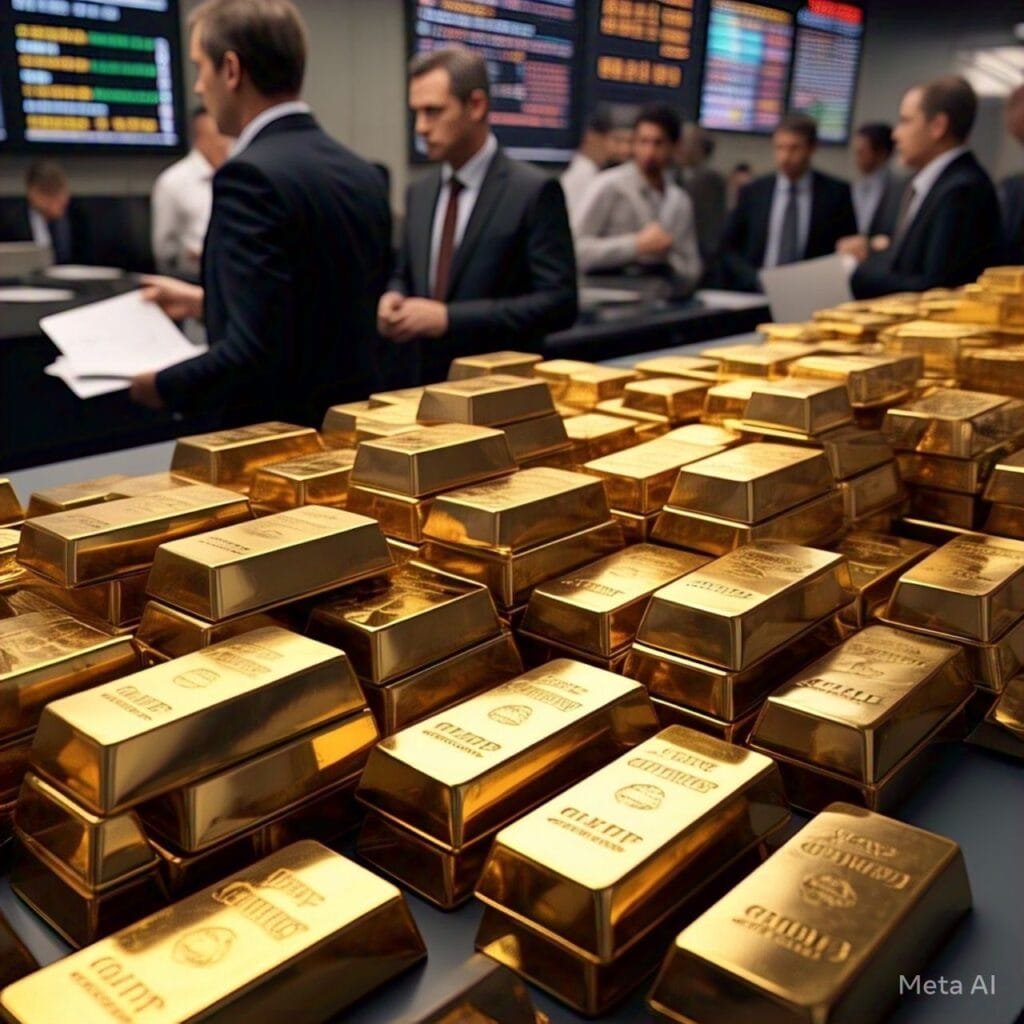
Gold prices have hit a historic high, surging past $3,100. Discover the factors driving this surge, its impact on investors, and what’s next for the precious metal.
In a groundbreaking turn of events, gold prices have surged past the $3,100 mark for the first time in history. This milestone has shaken the global financial markets, signaling a period of volatility and uncertainty. Investors and traders alike are closely monitoring this dramatic shift as it impacts various sectors, from precious metals to global economies.
Why Are Gold Prices Surging?
The recent spike in gold prices can be attributed to several global factors, each playing a crucial role in pushing the value of gold to unprecedented levels. Here’s a breakdown of the main reasons:
- Global Economic Uncertainty: The ongoing geopolitical tensions and economic instability in key regions have prompted a shift towards safer investment options. As inflation rises and central banks struggle to stabilize markets, investors flock to gold as a hedge against economic decline.
- Inflation Fears: Inflationary pressures are soaring worldwide, particularly in countries with high debt levels. With central banks unable to control inflation effectively, gold remains a secure store of value that maintains its purchasing power over time.
- Weakening of the Dollar: The decline in the value of the U.S. dollar has also been a key factor driving gold prices higher. As the dollar weakens, the price of gold tends to rise as it becomes a more attractive investment.
- Supply Chain Disruptions: Ongoing supply chain challenges, combined with reduced mining activity due to environmental concerns and global lockdowns, have limited the availability of gold, further driving up prices.
The Impact on Investors
The surge in gold prices presents both opportunities and risks for investors. Here’s what you need to know:
- Long-Term Investment: Investors seeking stability in the face of uncertain financial markets may view gold as a safe-haven asset. Historically, gold has proven to be a reliable store of wealth, especially during periods of inflation and economic downturns.
- Short-Term Trading Opportunities: Day traders and short-term investors are also seizing the opportunity to capitalize on price fluctuations. However, this comes with increased risk, as gold’s price volatility could result in significant losses in the event of a price correction.
- Gold Mining Stocks: As gold prices rise, so too does the potential profitability of gold mining companies. These stocks have often outperformed the broader market during periods of rising gold prices, making them an attractive option for equity investors.
Historical Context of Gold Prices
Gold has been a symbol of wealth and value for centuries. Historically, the price of gold has fluctuated due to economic, geopolitical, and social factors. Let’s take a brief look at some key moments in gold price history:
- 2008 Financial Crisis: During the global financial crisis, gold prices skyrocketed as investors sought safe-haven assets. Gold reached around $1,000 per ounce at the time, marking a significant increase from its earlier levels.
- 2011 High: In 2011, gold prices hit an all-time high of $1,920 per ounce amid fears of further economic collapse following the 2008 crisis. However, prices soon corrected as central banks stabilized economies.
- COVID-19 Pandemic: The COVID-19 pandemic brought unprecedented levels of monetary stimulus and central bank interventions. Gold prices surged above $2,000 in mid-2020, driven by concerns over inflation and economic instability.
What’s Next for Gold?
The $3,100 milestone has raised the question: Is this the peak for gold prices, or are we on the verge of even higher levels? Predicting the future of gold prices remains complex, as numerous factors influence its value. However, several trends suggest that gold could continue to perform well in the coming years:
- Continued Inflationary Pressures: As global inflation remains stubbornly high, gold may continue to act as a hedge against rising living costs and economic uncertainty.
- Demand from Emerging Markets: Demand for gold in emerging markets, particularly in Asia, has been on the rise, contributing to sustained pressure on prices.
- Central Bank Purchases: Many central banks around the world have been accumulating gold reserves as a form of financial security. This institutional demand could further support the upward trajectory of gold prices.
Conclusion
The surge in gold prices past the $3,100 mark marks a historic moment for the precious metal, reflecting broader economic trends and market sentiments. While the future remains uncertain, gold continues to stand out as a reliable store of value, offering both long-term security and short-term trading opportunities. Investors looking to safeguard their wealth against inflation and economic instability may find gold to be an attractive option.

